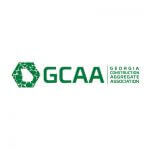 When it comes to getting members to engage with your content, whether your blog, e-mail newsletter, event sign-up, or donations, your call to action (CTA) goes a long way. According to Associations Now, getting members to engage starts with compelling them to act. It also helps with member recruitment when trying to get people to become members with your association. The call to action is a powerful tool for you to utilize and there are several tips that can help you build ones that are effective and successful in your mission.
When it comes to getting members to engage with your content, whether your blog, e-mail newsletter, event sign-up, or donations, your call to action (CTA) goes a long way. According to Associations Now, getting members to engage starts with compelling them to act. It also helps with member recruitment when trying to get people to become members with your association. The call to action is a powerful tool for you to utilize and there are several tips that can help you build ones that are effective and successful in your mission.
What is a Call to Action?
Your call to action is your chance to persuade your current and potential members to do what you want them to do. Think of it as your “Buy Now” statement. You will include this on everything from blogs, to social media posts, to newsletters. As an association, you should also include CTAs on your website copy to recruit new members or get renewals. A well-crafted call to action will have majority of the people who view your content engaging with and completing the tasks you want them to.
Short and Simple, Yet Informative
A good call to action is short, simple, and to the point. You want to make sure that you give enough information to inform the reader and guide them towards the desired action. You want to make sure the benefits are clear, for example:
“Sign up for our newsletter to receive all the latest association news, useful resources, and event invitations.”
Be sure to include easy to follow instructions to complete the action such as a link, a phone number, email address or a form to fill out. This will make it quick and easy for people to complete the action and increase the likelihood they will go through the necessary steps required.
Use Action Verbs
Wording is everything when it comes to the success rate of your call to action. Action verbs go a long way towards leading people to converting. Phrases such as “Sign up,” “Visit us at,” and “Learn more” can prompt people to take the actions you would like them to. Also, using words that show enthusiasm or spark emotion in your members and potential members will help drive action. You should always be willing to be creative with wording and try different methods to find CTA’s that work for your association. The only way to truly know what works is to test your ideas and see which ones are the most successful.
Frequency is Key
Make sure you are consistent with your CTA. This means including it on anything that your members and potential members will be viewing. Social media posts, newsletters, blog posts, and web copy are a few ideal places to include your CTA. The more your message is put in front of your audience, the better the chances are that your members will take action. Feel free to try different tactics and approaches to find what works best for your goals. Keep track of your results with each campaign so you can decide what is successful and what might not be. Every piece you put out should have a form of a CTA present.
Having successful calls to action for your association involves knowing your members and potential members and being able to craft a message that will drive them to act. Whether it’s signing up for the association’s email newsletter, registering to attend the annual conference, or becoming a new member; each call to action should be creative, specific, and intentional. The more you can provoke emotion or enthusiasm, the more likely your audience will be to take the desired action. Every campaign is unique, so try different tactics to find the ones that works best for your association and start getting results, now.
For more help with your association’s needs sign up for our newsletter, follow us on social media, or contact us here.








 Digital and social media are transforming how government institutions, political campaigns and trade associations are communicating and marketing to their key audiences.
Digital and social media are transforming how government institutions, political campaigns and trade associations are communicating and marketing to their key audiences.